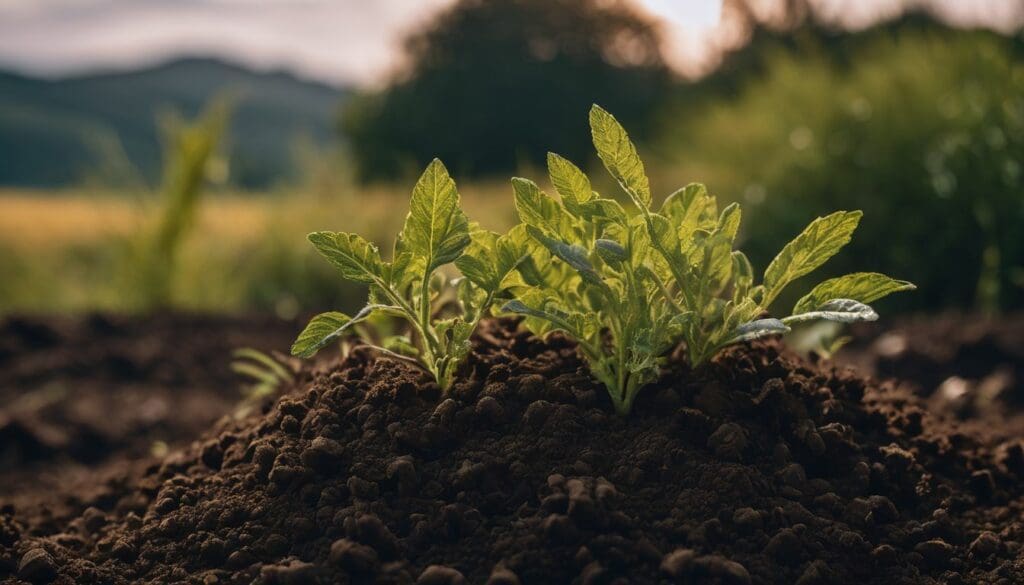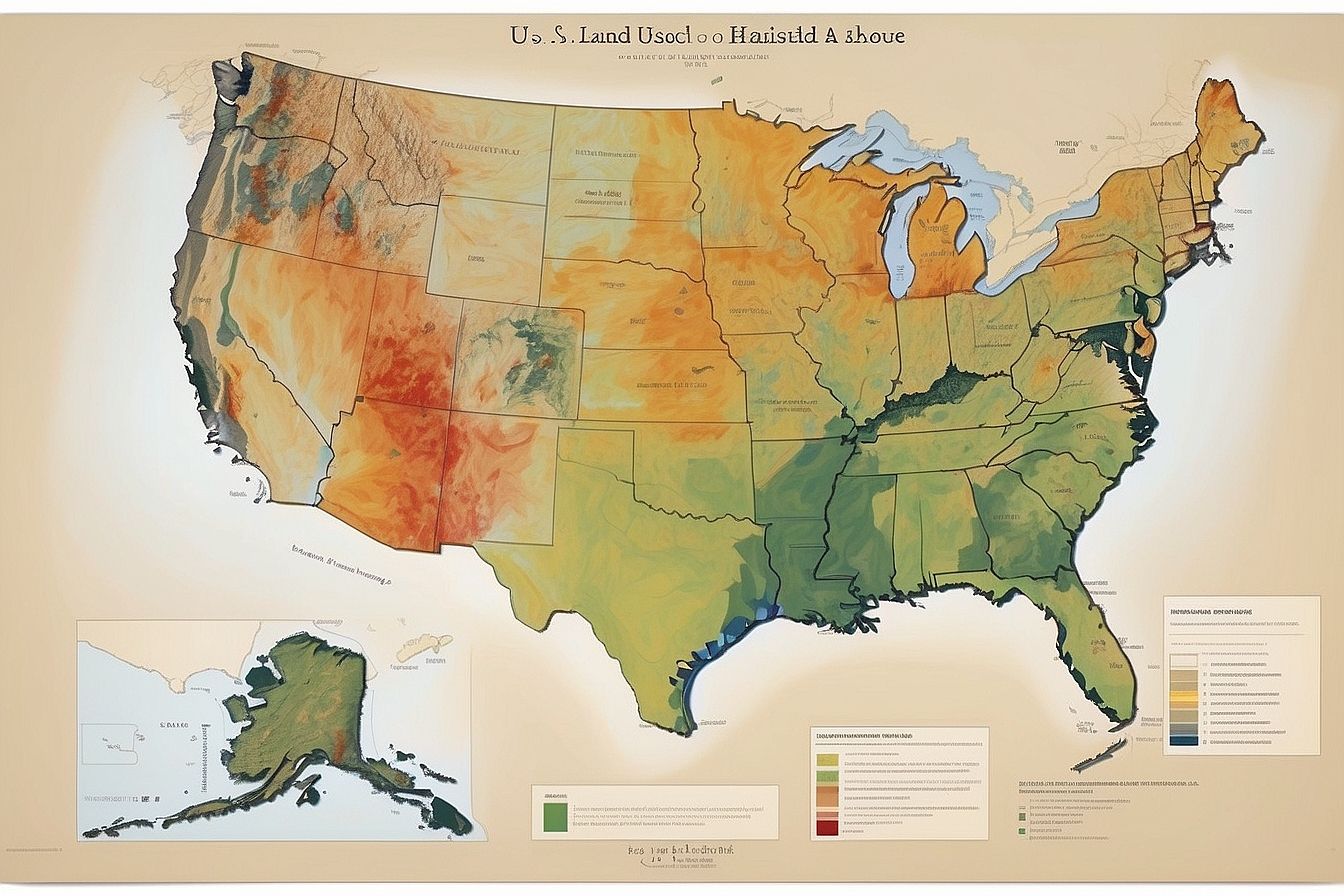Beneath the green quilt of our gardens and the bustling streets we tread upon daily, a hidden universe teems with life just beneath the soles of our boots. It’s true that nature’s canopy and its airborne marvels have long captivated us with their splendour.
And yet, only recently have we come to appreciate that each teaspoonful of earth cradles a staggering population—billions upon billions of microorganisms call it home. Our forthcoming article promises to be a veritable compass, guiding you through the diminutive dominion of these tiny but mighty ecosystem architects.
Together, let’s take an exploratory plunge into this unseen realm—it truly is a smaller world than we ever imagined!
Key Takeaways
- Soil microorganisms are essential in breaking down organic matter, which releases nutrients for plants and plays a significant role in carbon storage.
- The use of pesticides and fertilisers can harm the balance of soil ecosystems, affecting the diversity and function of microbial life within them.
- Microbes found in soil are key to discovering new antibiotics, with potential to fight diseases that have become resistant to current drug treatments.
- Practices such as deforestation and urbanisation also threaten the diversity and health of soil microorganisms.
- Future advancements in sustainable agriculture and medicine may rely on our ability to understand and harness the capabilities of these tiny but mighty organisms.
The Importance of Soil Microorganisms
Soil microorganisms play a crucial role in the carbon cycle, helping to store and release carbon into the atmosphere. They are also key players in maintaining soil health, breaking down organic matter and converting nutrients for plant uptake.
Their interconnectedness with ecosystems makes them essential guardians of our natural world.
Role in carbon storage
We play a crucial part in the carbon cycle, thanks to the tireless efforts of soil microorganisms. These tiny ecosystem guardians trap carbon from plant material and lock it away in the earth.
Through their metabolic activities, these organisms convert dead organic matter into rich humus, effectively capturing carbon that would otherwise escape back into the atmosphere.
Our understanding deepens as we explore how these microbial communities interact with their environment to maintain a balance in global carbon storage. They’re not just passive inhabitants; they actively shape their world, creating conditions that ensure more carbon remains underground.
By fostering soil health through responsible practices, we preserve this natural process that is vital to mitigating climate change impacts.
Key players in soil health
With their diverse metabolic activities, soil bacteria, fungi, and other microorganisms play a crucial role in maintaining soil health. These tiny organisms are responsible for breaking down organic matter, cycling nutrients, and improving soil structure.
Their interactions with plant roots also contribute to the overall resilience of ecosystems. Moreover, these key players help combat plant pathogens and promote growth by outcompeting harmful microbes.
Furthermore, the microbial community in the soil is essential for carbon storage and plays a vital part in recycling nutrients for plants’ growth. By fostering an understanding of these microscopic allies and nurturing healthy soils, we can better appreciate nature’s interconnected web of life while enhancing the sustainability of our environment.
Interconnectedness with ecosystems
The presence and activity of soil microorganisms are profoundly interconnected with the overall health and functioning of ecosystems. Through their role in nutrient cycling, these small but mighty organisms contribute to sustaining the delicate balance within terrestrial environments.
Soil microbiota, including bacteria, fungi, and viruses, play a crucial part in decomposing organic matter into nutrients that can be utilised by plants for growth. This process is foundational for supporting plant life which then forms the base of various food webs in ecosystems.
As such, preserving soil microbial diversity and activity is essential for maintaining healthy and thriving natural habitats.
Soil microorganisms also impact larger ecological processes through their involvement in carbon storage and greenhouse gas dynamics. Their ability to break down organic compounds contributes significantly to carbon sequestration in soils, thereby influencing global climate patterns.
Breakdown of organic matter
Soil microorganisms play a crucial role in the breakdown of organic matter, such as dead plant and animal material. They break down complex compounds like cellulose and lignin into simpler substances, releasing nutrients that support plant growth.
This process is essential for maintaining soil health and fertility, highlighting the interconnectedness of soil microbiology with ecosystem dynamics.
Microbial metabolism transforms organic matter into valuable resources for plants and contributes to carbon storage in soils. By facilitating this decomposition process, soil microbes help sustain life on Earth while actively participating in nutrient cycling within ecosystems.
Conversion of nutrients for plants
Upon breaking down organic matter, soil microorganisms convert the released nutrients into forms that plants can readily absorb. This microbial metabolism is essential for sustaining plant growth and maintaining soil fertility.
By efficiently converting nutrients such as nitrogen, phosphorus, and potassium into accessible forms, soil microbes play a crucial role in supporting healthy plant growth and ecosystem functioning.
Additionally, the diverse array of soil microorganisms contributes to the overall richness and balance of nutrients available to plants. This process underlines the interconnectedness between soil biology and plant health, highlighting the significance of preserving soil biodiversity for sustainable agricultural practices worldwide.
Threats to Soil Microbial Diversity and Functioning
Human activities such as the use of pesticides and fertilisers can negatively impact soil microbial diversity and functioning. These practices can disrupt the delicate balance of the soil ecosystem, leading to a decrease in microbial activity and overall health.
Impact of human activities
Human activities have a significant impact on soil microbial diversity and functioning. The use of pesticides and fertilisers can disrupt the delicate balance of soil microorganisms, leading to reduced biodiversity and impaired ecological functions.
Furthermore, deforestation, urbanisation, and industrialisation also contribute to the loss of soil microbial diversity. These disruptions can affect organic matter decomposition, nutrient cycling, and carbon storage in the soil.
In addition to these effects on soil ecology, human activities can also contribute to antibiotic resistance in soil microbes. The excessive use of antibiotics in agriculture and other industries can lead to the development of resistant strains among soil bacteria.
Use of pesticides and fertilisers
The use of pesticides and fertilisers can significantly impact soil microbial activity. Pesticides can directly harm soil microorganisms, disrupting their important roles in nutrient cycling and organic matter decomposition.
Additionally, the overuse of fertilisers can create imbalances in the soil ecosystem, altering microbial diversity and functioning. These disruptions ultimately compromise the overall health and productivity of the soil, affecting plant growth and ecosystem stability.
To support conservation efforts and promote sustainable practices, it’s crucial to carefully consider the use of pesticides and fertilisers to minimise negative impacts on soil microorganisms.
Harnessing the Power of Soil Microbes
Research in harnessing the power of soil microbes has shown promising potential for future advancements, such as in the fields of agriculture and medicine. Soil microorganisms also play a crucial role in antibiotic research due to their ability to produce compounds with antimicrobial properties.
Potential for future advancements
Soil microbes hold immense potential for future advancements in various fields. Harnessing their power can lead to innovative solutions for agricultural practices, such as developing sustainable biofertilisers and biopesticides that promote soil health without harming beneficial microorganisms.
Moreover, ongoing research into the use of soil microorganisms in antibiotic development could yield new treatments for human diseases, reducing the reliance on synthetic antibiotics and mitigating the rise of antimicrobial resistance.
Exploring the hidden world of soil microorganisms opens up exciting possibilities for environmental conservation and human health. By leveraging their diverse capabilities, we can pave the way for a more sustainable and healthier future.
Importance in antibiotic research
Soil microorganisms play a vital role in antibiotic research, offering a rich source of compounds with potential medicinal properties. Scientists have turned to the soil for new antibiotics as resistance to existing drugs continues to rise.
The diverse microbial communities within the soil possess unique genetic and metabolic capabilities, making them prime candidates for the discovery of novel antibiotic compounds that could help combat infectious diseases.
Understanding the importance of soil microorganisms in antibiotic research can lead to groundbreaking discoveries that may address global health challenges and improve human well-being.
Unlocking the potential of these tiny organisms offers hope for creating new treatments that can save lives and protect public health from emerging threats. Harnessing this knowledge opens doors to promising advancements in medical science.
Conclusion
The vital role of soil microorganisms in maintaining ecosystem health and carbon storage cannot be overstated. Human activities, such as pesticide use and intensive farming, pose significant threats to the diversity and functioning of these essential organisms.
However, by understanding and harnessing the power of soil microbes, we can pave the way for future advancements in agriculture, medicine, and environmental conservation. Join us in unlocking the hidden potential of this intricate microbial world beneath our feet.
FAQs
1. What are soil microorganisms?
Soil microorganisms include tiny, living creatures in the soil like bacteria, fungi, and viruses that are crucial for the Earth’s ecosystem.
2. How do soil fungi benefit the environment?
Soil fungi break down dead materials into nutrients, helping plants grow and maintaining healthy soil.
3. Are there viruses found in the soil?
Yes, there are many types of viruses present in the soil which interact with other microorganisms and can affect nutrient cycles.
4. What role do microorganisms play in the hidden world beneath our feet?
These unseen creatures help recycle nutrients, support plant health, and keep soils fertile within their mysterious underground realm.





